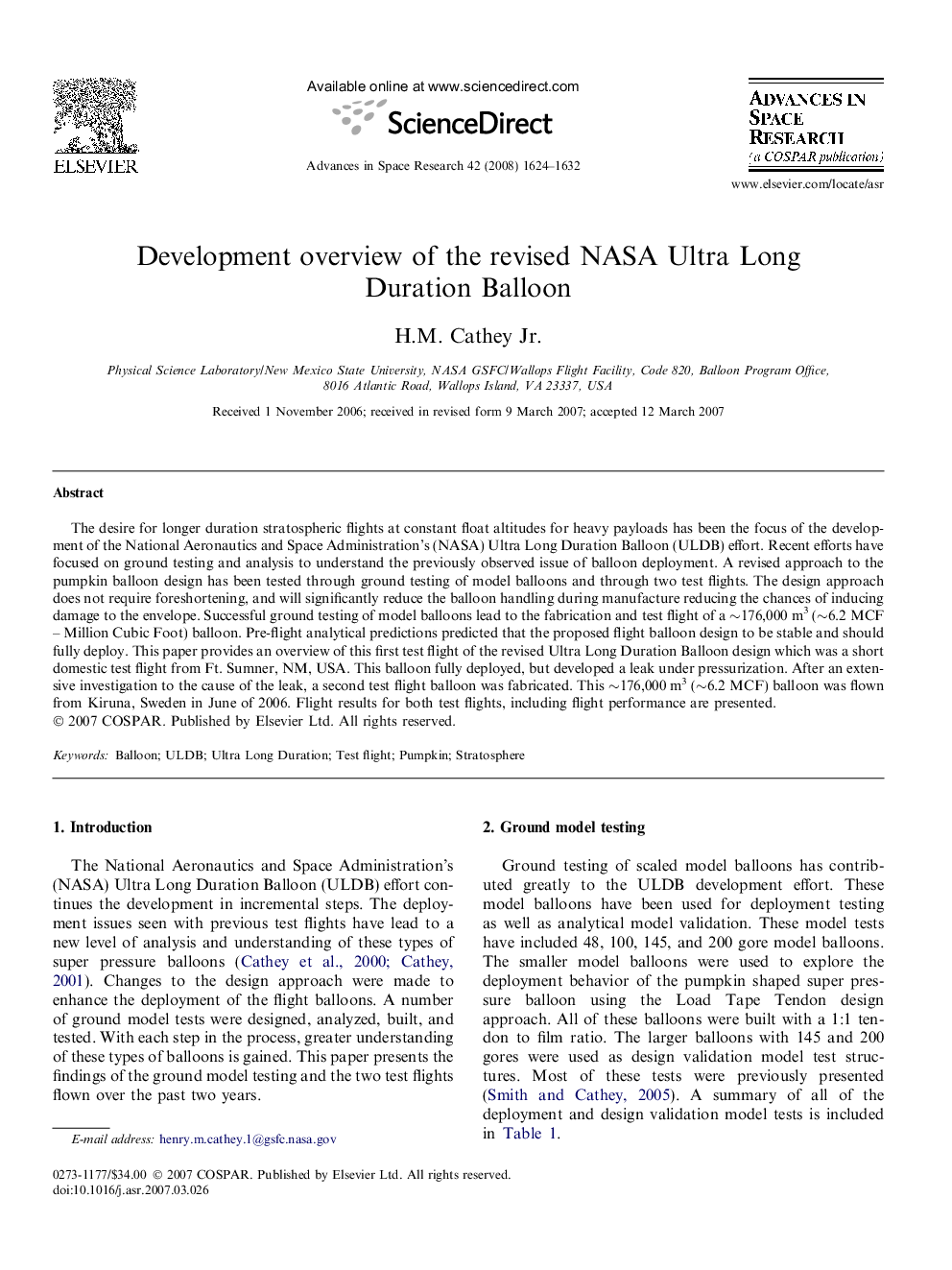| Article ID | Journal | Published Year | Pages | File Type |
|---|---|---|---|---|
| 1765863 | Advances in Space Research | 2008 | 9 Pages |
The desire for longer duration stratospheric flights at constant float altitudes for heavy payloads has been the focus of the development of the National Aeronautics and Space Administration’s (NASA) Ultra Long Duration Balloon (ULDB) effort. Recent efforts have focused on ground testing and analysis to understand the previously observed issue of balloon deployment. A revised approach to the pumpkin balloon design has been tested through ground testing of model balloons and through two test flights. The design approach does not require foreshortening, and will significantly reduce the balloon handling during manufacture reducing the chances of inducing damage to the envelope. Successful ground testing of model balloons lead to the fabrication and test flight of a ∼176,000 m3 (∼6.2 MCF – Million Cubic Foot) balloon. Pre-flight analytical predictions predicted that the proposed flight balloon design to be stable and should fully deploy. This paper provides an overview of this first test flight of the revised Ultra Long Duration Balloon design which was a short domestic test flight from Ft. Sumner, NM, USA. This balloon fully deployed, but developed a leak under pressurization. After an extensive investigation to the cause of the leak, a second test flight balloon was fabricated. This ∼176,000 m3 (∼6.2 MCF) balloon was flown from Kiruna, Sweden in June of 2006. Flight results for both test flights, including flight performance are presented.
